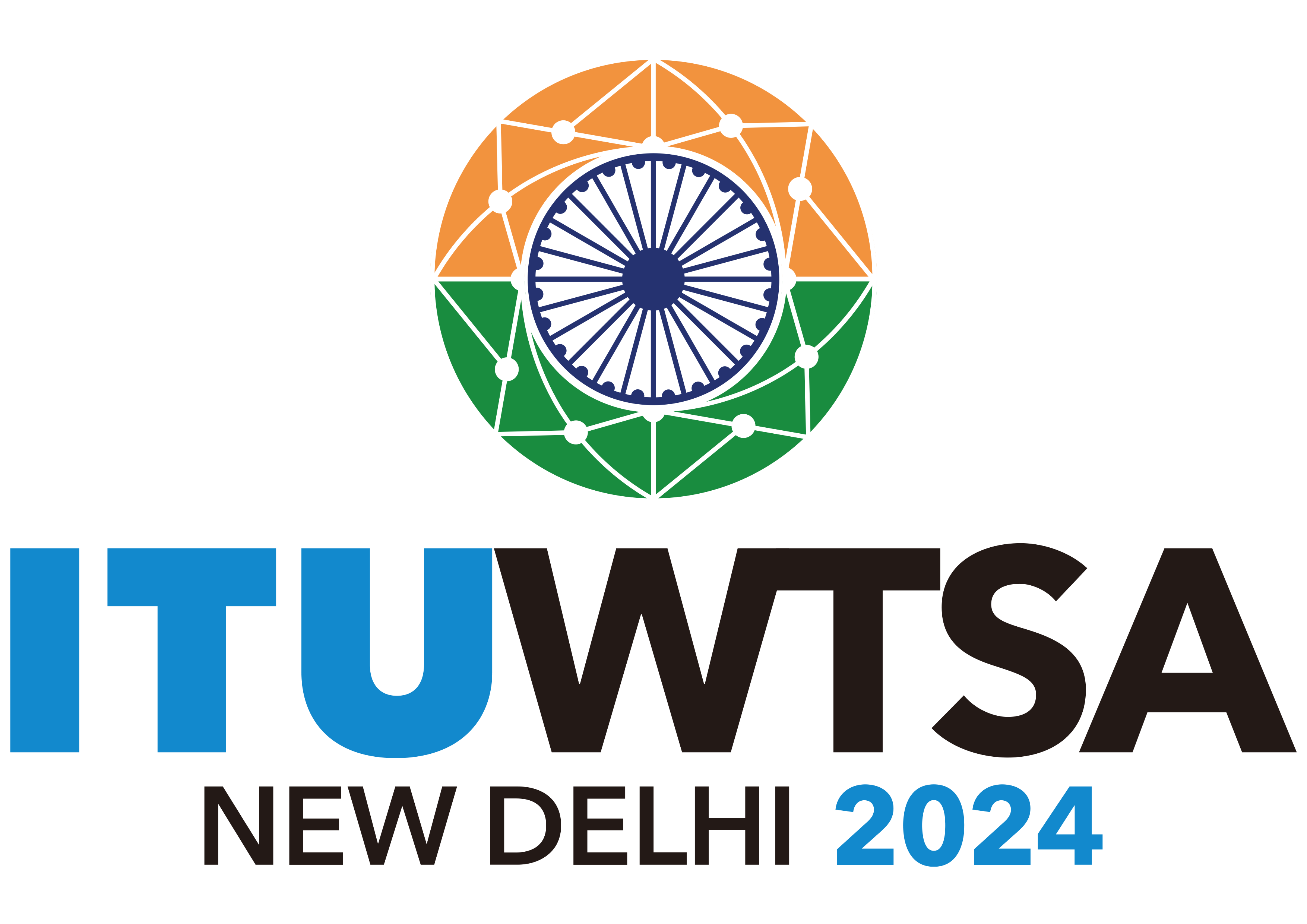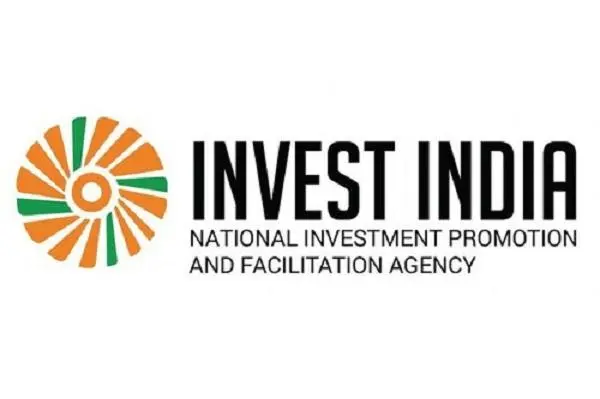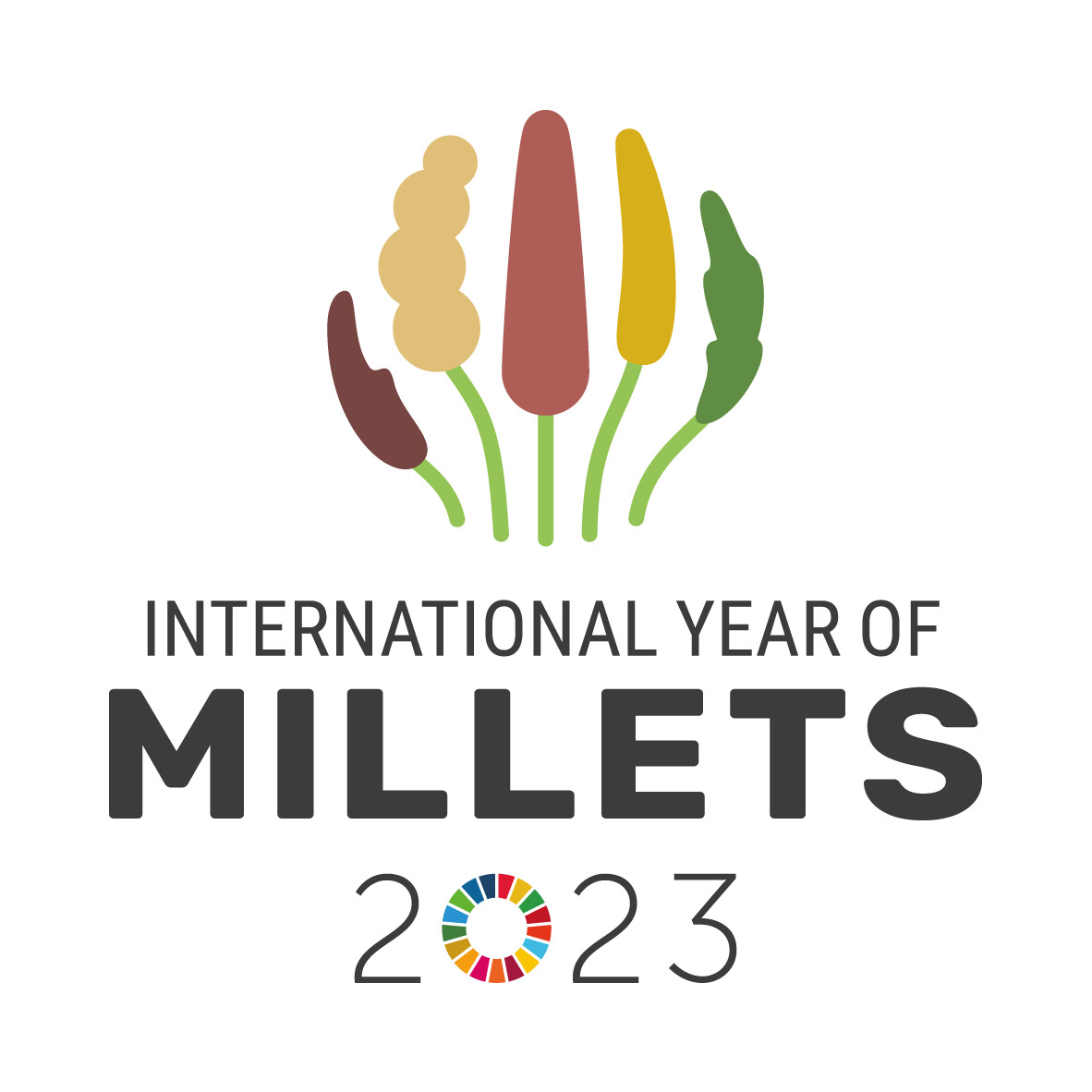Interviews/Articles by Ambassador of India
1. Ajou News (3 July)
[특별기고] 인도와 한국: 가야에서 세계로
비크람 도래스와미 주한인도대사
문재인 대통령의 첫 인도 방문을 맞아, 인도는 전략적 동반자 관계인 한국과의 관계를 공고히 할 기회를 맞게 됐다.
나렌드라 모디 인도 총리는 한국에 대해 인도정부가 추진하는 ‘적극적 동방정책(Act East)’의 핵심 동반자라고 강조해 왔다. 이는 한국과 인도 관계를 강조하는 문재인 대통령의 ‘신남방정책(New Southern Policy)’과도 부합한다.
문 대통령이 말한 것처럼, 양국 간 우호 관계는 정부의 주요 목표인 평화·발전·국민복지에 기여할 것이다. 양국 정상이 지속적인 관심을 기울이고, 동시에 이에 걸맞은 강력한 동반자 관계로 나아가기 위해 노력해야 한다.
문 대통령의 인도 방문은 양국 협력에 새로운 활력을 불어넣을 것이다. 그렇다면 양국 관계를 강화하는 것이 왜 중요할까.
2000년 전 가야국(현재 김해)으로 건너온 아요디야국 수리라트나 공주와 김수로 왕의 혼인으로 시작된 양국 관계는, 우호적이고 호혜적인 종교·문화 교류와 교역으로 이어져 왔다.
서로 이견이 없는 우호 관계를 유지해 왔으며, 또한 식민시대와 분리·전쟁 등 서로의 고통을 통감했다.
오늘날까지 이어져 온 오랜 우호 관계는 강력한 시너지를 발생하는 경제협력으로 이어질 수 있다. 전략적 측면에서도 인도는 향후 수십년간 한국의 새로운 성장동력이 될 것이다. 인도 경제의 성장은 모든 생산라인과 운영, 내수 및 수출을 위한 인도내 생산 등 다양한 기회를 한국에 제시한다. 인도 역시 기술·제조업 및 금융 강국인 한국과 협력하는 것을 원하고 있다.
그러나 이것이 전부는 아니다. 전자시스템 설계·제작 분야에서 한국 제조업의 우수성은 인도에 꼭 필요한 부분이다.
반면 인도의 정보기술(IT)과 소프트웨어 설계·공학 기술은 한국 기업의 세계 경쟁력을 한층 발전시킬 수 있다. 삼성·LG·현대가 인도에 연구개발(R&D) 센터를 세운 이유가 여기에 있다. 또 한국의 연령 피라미드는 세계에서 가장 빠른 속도로 변화하고 있다. 반면 인도의 청년 인구수는 조만간 세계 1위가 될 것으로 전망된다.
장기적으로 고수익이 보장되는 인도 국부인프라펀드(NIIF)와 같은 금융투자 기회를 통해 한국은 지속적인 수익을 보장받을 수 있다. 반면 인도는 인프라 투자에 요구되는 금융을 확보할 수 있다.
정치적 측면에서 양국의 협력도 중요하다. 양국에는 '자유롭고 개방적이며 규범에 기반한 인도·태평양 지역을 실현한다'는 목표에 대한 공통의 관심사가 있다. 이 지역은 교역과 에너지 공급을 위한 주요 노선이다.
양국은 크기에 상관없이 모든 국가가 동등한 권리를 갖고 있으며, 어떤 경우에도 국제 규범 또는 제도가 배타적으로 적용되어서는 안된다고 믿는다.
모디 총리는 “인도의 비전은 ‘SAGAR’”라고 말했다. SAGAR는 인도어로 '대양'을 뜻하는 말이다. 이 지역의 안보 및 성장(security and growth for all in the region)'의 머리글자를 따 만든 용어이기도 하다. 이러한 상황과 정세를 배경으로 인도는 문 대통령을 맞이한다. 두 정상은 이러한 공통의 관심사와 가치를 바탕으로 양국이 더욱 강력한 동반자가 되기를 바라고 있다.
교역은 증가하고 있으며, 포괄적경제동반자협정(cepa)의 개정은 교역품 확대와 상품 및 서비스 처리의 향상에 기여할 것이다. 투자도 총 40억 달러 규모로 늘었다. 우호적 민주주의 국가인 한국과 인도가 평화에 귀속되고, 역내외 안정과 안보유지에 기여하는 국방 분야의 협력 및 교류도 확대되고 있다.
국경이 사라지는 글로벌 기술시대에 양국 청년은 스타트업과 과학기술연구뿐 아니라 △언어교육 △관광업 △문화교류 등 서비스 분야에 이르는 다양한 협력기회를 희망하고 있다.
양국은 정책과 세계를 향한 가치를 공유한다. 가야에서 시작된 특별한 역사와 인연을, 세계 무대에서의 동반자 관계로 이어가는 것이 우리의 책무다. 양국 관계는 깊은 역사에 뿌리를 두고 있으며, 다가올 밝은 미래 역시 함께 맞이하고 있다.
2. Hankyung News (3 July)
비크람 도래스와미 주한 인도대사 "韓-인도는 100% '윈윈' 관계… 함께하면 성공합니다"
입력 2018-07-03 18:11 수정 2018-07-04 03:04
이달 말 임기 마치는 비크람 도래스와미 주한 인도대사
韓-인도 정상회담 끝나면 귀국
재임 중 두 나라 교역 크게 늘어
"韓기업, 인도시장서 기회 잡으면
서남아·북아프리카도 진출 가능"
“한국과 인도는 100% 윈윈할 수 있는 관계입니다.”
비크람 도래스와미 주한 인도대사(사진)는 3일 한국경제신문과의 인터뷰에서 “정보기술(IT) 분야를 예로 들면 한국은 하드웨어, 인도는 소프트웨어에 강점이 있기 때문에 자연스레 시너지를 낼 수 있다”며 이렇게 말했다. 이어 “두 나라는 아픈 과거사가 없을 뿐만 아니라 경제적으로도 상호 균형을 이루면서 발전할 수 있는 구조”라고 강조했다.
2015년 4월 부임한 도래스와미 대사는 오는 8~11일 문재인 대통령의 인도 국빈방문이 끝나면 3년여 임기를 마치고 귀국한다. 그는 “문 대통령과 나렌드라 모디 인도 총리의 정상회담이 양국 외교 관계를 격상하고 경제협력을 강화하는 계기가 되길 기대한다”고 밝혔다.
도래스와미 대사는 주한 인도대사관의 슬로건을 한국어로 “함께하면 성공합니다”로 정했다. 그 덕인지 재임 기간 양국 교역이 크게 늘었다. 그는 “한국의 대(對)인도 수출은 지난해 전년 대비 30% 증가했고 앞으로도 늘어날 것”이라고 말했다. 지난해 인도의 대한국 수출 증가율은 18%였다. 그는 “K-9 자주포 수출 등 방위산업에서의 양국 협력이 강화되고 있다”고 전했다.
도래스와미 대사는 “인도 식품시장이 빠르게 커지고 있어 롯데 오리온 오뚜기 등의 기업에 큰 기회가 될 것”이라고 말했다. 인도 식품 및 소비재 시장은 글로벌 기업이 주목할 만큼 빠르게 성장하고 있다. 월마트는 인도 최대 전자상거래업체 플립카트의 지분 77%를 160억달러에 인수하기로 합의했다. 그는 “배달 등 전자상거래 스타트업(신생 벤처기업)도 인도에서 기회를 찾을 수 있다”고 했다. 인도에서 성공하면 서남아시아와 북아프리카 시장에서도 성공할 수 있다는 게 그의 설명이다.
도래스와미 대사는 “인도는 모디 총리의 경제개혁이 성과를 내면서 자동차 스마트폰 가전 등 다양한 제품 수요가 빠르게 늘고 있다”며 한국 기업의 투자와 관심을 당부했다. 국제통화기금(IMF)은 올해 인도 경제성장률을 7.4%, 내년엔 7.8%로 전망했다.
2014년 5월 취임한 모디 총리는 주(州)마다 달랐던 부가가치세를 통일하는 세제 개편, 고액 화폐권을 없애는 화폐개혁을 단행해 재정 안정성과 투명성을 높였다. 또 파산 절차 간소화 등 친(親)시장 정책을 펴면서 세계은행의 기업환경평가(Doing Business)도 개선됐다고 도래스와미 대사는 설명했다. 세계은행이 발표하는 선도국가 격차지수(DTF)를 보면 인도는 2017년 56.05에서 올해 60.76으로 상승했다. DTF는 0에서 100까지로 100에 가까워질수록 선도국가란 의미다. 한국은 83.92, 중국은 65.29를 기록했다.
도래스와미 대사는 “경제뿐만 아니라 관광, 교육 분야에서 더 많이 협력할 수 있다”며 “양국 관계의 잠재력을 볼 때 할 수 있는 일이 많이 남았다”고 말했다.
글=추가영/사진=신경훈 기자 gychu@hankyung.com
3. [Herald Interview] ‘India, Korea can leap forward across Indo-Pacific’
Published : May 14, 2018 - 16:59
With the anticipated visit of South Korean President Moon Jae-in to India this year, New Delhi looks forward to stronger pragmatic engagement with Seoul, harnessing synergies in their mutual pivots across the Indo-Pacific region, according to India’s top envoy to Korea.
Similar to Korea, which has announced its “New Southern Policy” aimed at strengthening ties with Southeast Asian and South Asian countries, India has its “Act East Policy,” which builds on the previous “Look East Policy,” with a greater emphasis on implementing policies of comprehensive cooperation.
“As Korea expands its diplomatic footprints beyond its immediate region, we have long believed that India and Korea are bound to be natural partners,” said Indian Ambassador to Korea Vikram Doraiswami in an exclusive interview.
“It is only natural that India and Korea -- democracies with similar values, aspirations and capacities -- strengthen their ties on the political, defense, economic, cultural and people-to-people fronts.”
While the exact date of Moon’s visit has yet to be announced formally, the prospective summit will be the pinnacle of both governments’ cooperative endeavors, laying the ground for further collaborations across corporate entities, civil societies and academic institutions, he added. Prime Minister Narendra Modi, India’s 16th premier since 2014, paid an official visit to Korea in May 2015 at the beginning of Doraiswami’s tenure.
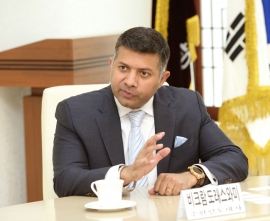
Indian Ambassador to Korea Vikram Doraiswami (Indian Embassy in Korea)
“India has significantly expanded its ties with all its eastern neighbors, including China, Japan and Korea, as well as the 10 members of the Association of Southeast Asian Nations, Australia and New Zealand,” according to the journalist-turned-diplomat.
“Our leadership is closely engaged with their counterparts in these countries, with the aim of invigorating political, strategic, economic and cultural bonds that anchor India and its eastern horizons closely together.”
Building on Modi’s visit to Seoul, nearly all of India’s senior ministers have visited Korea over the last 3 1/2 years. They include the ministers of external affairs; finance; defense; commerce and industry; road transport, highways, water resources and shipping; railways; science and technology; information technology and electronics; and human resources development.
The bilateral trade in 2017 grew by 30 percent on both sides from the previous year, reversing a negative trend that had started in 2011, according to Korean official statistics cited by the Indian Embassy in Seoul. Investment flows have gained momentum, with Korean firms having plowed nearly $3.5 billion in the last three years into India’s automobiles and auto components, electronics, chemicals, technical textiles, food processing, finance and other industries.
The two countries are currently in the final stage of negotiation to upgrade the Comprehensive Economic Cooperation Agreement -- a bilateral free trade agreement that entered into force in 2010 -- with an aim to improve the competitiveness of each side’s goods and services in their markets, and spur synergies in information technology and electronics, energy and shipbuilding, according to the diplomatic mission.
The agreement has facilitated the opening of both economies’ services market. On the Indian side, telecommunications, construction, distribution, transportation, accounting, real estate, health care and other sectors have opened, while on the Korean side, consulting, education, engineering and computer science have been liberalized.
Defense ties in particular have grown from strength to strength, with a major defense partnership deal worth nearly $1 billion signed last year for the joint production of Korean self-propelled artillery guns and India’s purchase of these weapons. Five Indian Navy vessels have sailed to Korea over the past three years, extending the blood-sealed partnership that stretches back to the 1950-53 Korean War.
The two governments signed the Strategic Partnership Agreement in defense production in March last year, identifying areas of further cooperation.
“Our goal is to be able to find synergies between areas of India’s strengths and Korea’s needs, and vice versa. Shipbuilding is one such area in which Korean firms could look at India’s naval roll-out strategically, as a means of ensuring standing business orders for future decades,” noted the ambassador.
“Our bright young military officers are also studying at each other’s military academic and related institutions for the first time on an institutionalized basis of exchange annually. They will recognize the opportunities and potentials our India-Korea partnership offers.”
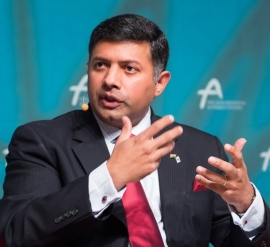
Indian Ambassador to Korea Vikram Doraiswami (Indian Embassy in Korea)
Doraiswami said India is keen to buttress its partnerships with countries across the Indo-Pacific region: a concept describing the evolving geopolitical and economic order surrounding the Indian Ocean’s tropical waters, the western and central Pacific Ocean and the Southeast Asian seas.
He countered the prevailing view that the Indo-Pacific concept, or strategy, largely promoted by Washington, Canberra, Tokyo and New Dehli, is designed to curb the influence of Beijing, which has brandished its vision of global integration through the “One Belt, One Road” initiative. China’s ambitious global project comprises the overland Silk Road Economic Belt and oceanic Maritime Silk Road projects.
“Prime Minister Modi has stated that the purpose of engagement across the Indo-Pacific should be to promote cooperation, not dominance; connectivity, not isolation; respect for the global commons; inclusive, rather than exclusive, architectures; and adherence to international rules and norms,” the diplomat said.
“Therefore our focus is on the development of an open, transparent and inclusive architecture linking the Indian and Pacific oceans. We desire to work with all stakeholders whose prosperity and security depend on the waterways traversing these two major oceans.”
Noting that while India is not as trade-dependent an economy as East Asian ones, including Korea, Doraiswami stressed that his country was vitally interested in the security and stability of the region, as well as securing access to maritime “highways” in the Indian Ocean and the surrounding seas, through which the majority of the world’s energy resources and trade flow.
“In addition to strengthening our maritime industry in the oceans economy, we are rapidly expanding our naval and coast guard capabilities that include aircraft carrier groups, submarines and aircrafts,” he said. “Our security needs require an extensive scaling-up of our existing platforms. Some $35 billion worth of equipment is currently on our navy’s shopping list for procurement over the next decade and beyond.”
The ambassador encouraged Korean shipyards and their tier-one companies, which have faced industrywide financial difficulties in recent years, to create partnerships with India’s maritime enterprises. The Indian market can not only sustain their businesses, but also create jobs on both sides, he said.
By Joel Lee (joel@heraldcorp.com)


